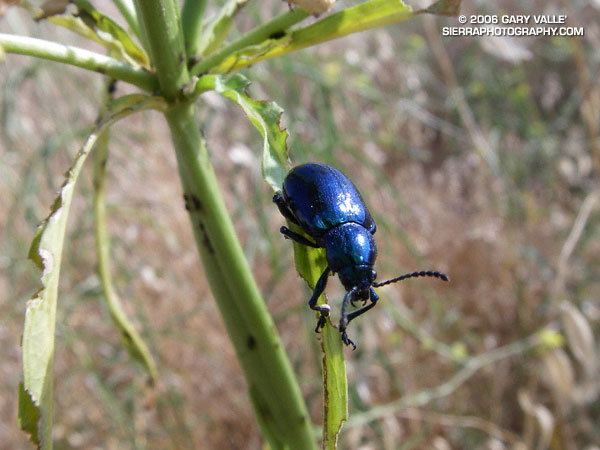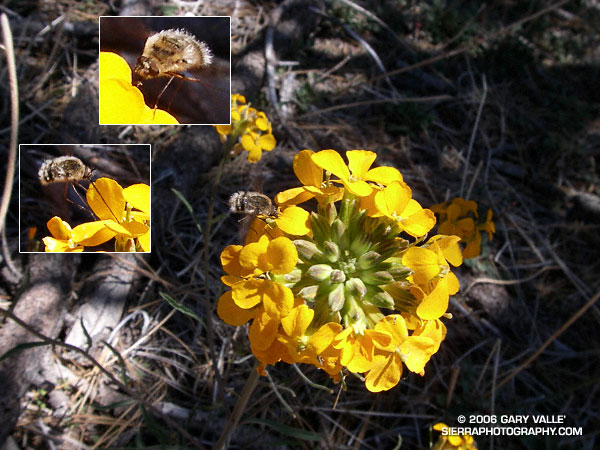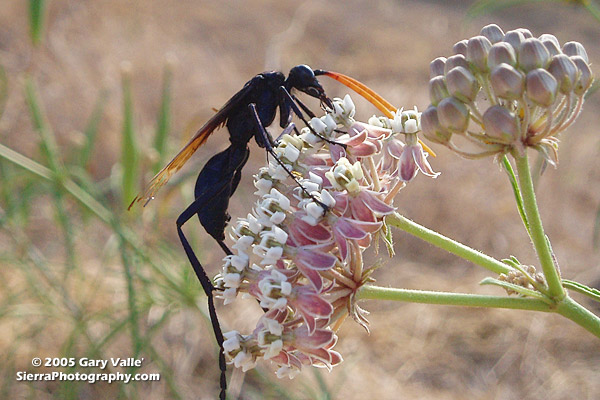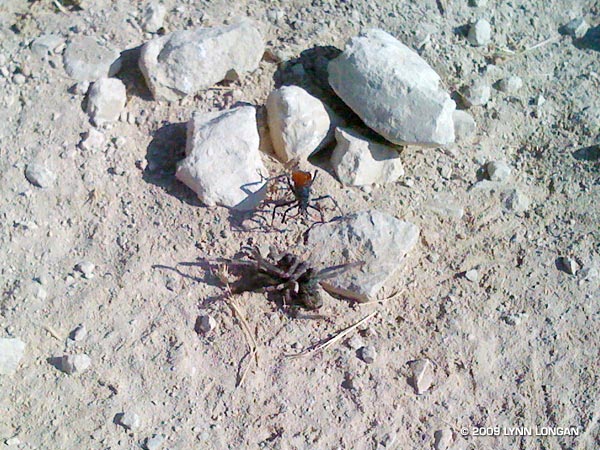
Cucumber Beetles (Acalymma trivittata) munching on the pistillate blossom of the wild gourd Calabazilla (Cucurbita foetidissima). The photograph is from Sunday’s Ahmanson-Cheeseboro run.

Cucumber Beetles (Acalymma trivittata) munching on the pistillate blossom of the wild gourd Calabazilla (Cucurbita foetidissima). The photograph is from Sunday’s Ahmanson-Cheeseboro run.

A Blue Milkweed Beetle (Chrysochus cobaltinus) on a somewhat insect eaten Narrow Leaf Milkweed (Asclepias fascicularis).
Photograph was taken on a run on Laskey Mesa in Upper Las Virgenes Canyon Open Space Preserve (formerly Ahmanson Ranch).

The fuzzy critter with the beady eyes is a Bee Fly. Its darting, hummingbird-like movements caught my eye while running on the Tumamait Trail near Mt. Abel (Cerro Noroeste) on Sunday. It was feeding on a Western Wallflower (Erysimum capitatum). Fully consumed by the morning’s experiences, I had been marveling at the vibrant yellow of Wallflowers along the trail.
With only a cursory glance, someone might mistake a Bee Fly for a bee. It does buzz. But the resemblance is superficial. It is smaller than a Honey Bee, and more thick-bodied. It has long legs, and a long proboscis to collect nectar. These can be seen in the inset photographs.
Looking at these photographs it struck me that there probably is a relationship between the length of the Bee Fly’s proboscis, and the length of its legs. It can be seen in the photos that the Bee Fly uses its legs to grasp a plant while flying and feeding. This helps stabilize its flight, conserves energy, and enables a quick escape from a possible predator. It would seem that the legs have evolved to be just long enough to accomplish this task.

Like the Star Lily, Large Flowered Phacelia (Phacelia grandiflora) appears to be a “fire follower,” blooming in the Simi Hills in the aftermath of the Topanga Fire.

Tarantula Hawks are among the largest of wasps, and are said to have one of the most painful stings of any insect. As chilling as any science fiction, female tarantula hawks hunt, attack and paralyze a tarantula, and then use the spider’s inert — but still living — body as a host for the wasp’s egg and developing larva.

Males have straight antennae, and females curled antennae. This may be because the long, showy antennae of the male would be a serious liability when battling a tarantula. The title photo is of a male on a narrow-leaf milkweed (Asclepias fascicularis) at the start of the Chumash Trail in Simi Valley. Here’s another photo, taken in Las Llajas canyon by runner Lynn Longan, in which a female tarantula hawk has just attacked and paralyzed a tarantula.
Several good runs start at the Chumash trailhead, and many variations are possible. It’s 2.6 miles up the trail to Rocky Peak Rd, and from there you can do out and backs north or south along the fire road, or loops via Las Llajas canyon, the Hummingbird Trail, or the Lower Stagecoach Trail. (Photo from a run on September 14, 2005.)
Related post: Sting of the Tarantula Hawk, Chumash Trail Training